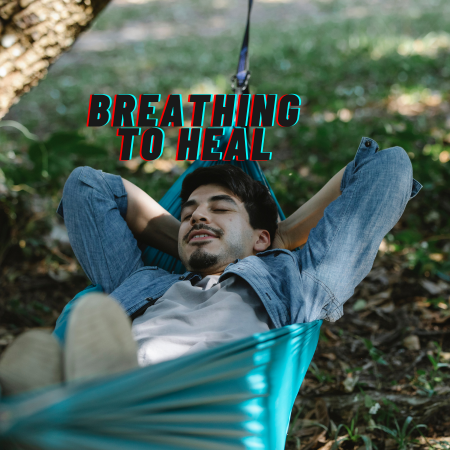How Breathing Provides Calmness and Energy
Breathing is a natural function for all living things. Breathing is a process that brings oxygen to the cells in the body and cycles out carbon dioxide. If one stops breathing the person will struggle with themselves (or death). Regardless of what a person is doing, there is always a process of inhaling and exhaling. But the tempo of the breathing is not always the same. Whether a person is physically active or not, they could be breathing fast or slow. The tempo of the breath can affect the individual’s behavior. Its best practice is to keep the breath at a slow to moderate pace. Breathing is also connected to cognitive function as it can trigger some areas of the brain. What gets stimulated is the vagus nerve (part of the parasympathetic nervous system) and this is responsible for many body functions such as heart rate, immune system, and respiratory system.
Many who have a controlled way of breathing tend to be more calm and attentive. Because of this, breathing in the proper way can reduce stress and other issues. It can also prevent the feeling of tiredness, and help a person get energy. The body needs oxygen to obtain energy to fuel all the body’s living processes. Breathing exercises are quite popular today since many want to regain control of themselves (people who experience mental health issues). Even those who are in stressful situations have a practice in place to calm down. Navy seals themselves have a breathing exercise to keep themselves calm. They use a technique called “Box Breathing” (more on this later).
The Process of Breathing
When a person begins to inhale air it starts by entering the nasal cavity and then goes through the pharynx, throat, bronchi, and bronchioles. This is known as the conduction zone (part of the respiratory tract) where the air is brought into the lungs and the filtering process begins with the bronchi and bronchioles. As the person breathes air there could be dust or any other particles, the cilia captures it to prevent them from reaching the lungs. Now, the human body also has the respiratory zone (also part of the respiratory tract) and it is comprised of the respiratory bronchioles, alveolar ducts, alveolar sacs, and alveoli. The respiratory zone is responsible for moving gases out of the blood. The individual is breathing in nitrogen (nearly 80%), oxygen (about 20%), carbon dioxide (.04%), and other gases. The primary function of the respiratory system is to provide oxygen to the blood and get rid of other gases.
How Breathing Can Provide Energy
First, the individual needs to consume food in order to get energy. The person needs to consume carbohydrates and proteins which convert to sugar and amino acids after being digested. These elements become small enough to travel through blood. As the blood moves the sugar to the cells, the mitochondria (powerhouse of the cells) breaks up the chemical bonds to liberate the energy it has. The energy is placed in adenosine triphosphate (ATP) which is available for use. It goes to show ingesting healthy foods and breathing properly can offer energy since every cell in the body needs oxygen.
The Parasympathetic Nervous System
The parasympathetic nervous system (PNS) is known for the “rest and digest” function of the body. There is also the sympathetic nervous system (SNS) and this controls the fight or flight response. Although the SNS can affect a person’s ability to function (if this acts up) the person can feel stressed and be on edge. To remediate this, the PNS can do its duties to calm down the individual and how this works is by slowing down the breath. Taking deep breaths can help initiate the role of the PNS. When this occurs this can help with emotional control. It can also support digestion, cardiovascular health, and the pulmonary system. The PNS keeps a person relaxed since breathing is the activity that is needed.

Techniques to Implement
There are some exercises a person can do to practice or better their breathing. As previously stated breathing is one of the primary needs of humans as it calms the individual, provides energy, and improves mental function. Common exercises are yoga and meditation since they are focused on inhalation and exhalation. But there are other ways of regulating the breath. Here are some:
- Box Breathing: inhale for 4 seconds, hold for 4 seconds, and exhale for 4 seconds. Do this as many times as needed. Navy Seals use this technique to calm themselves in stressful situations.
- Meditation: It is simple but effective since the individual is sitting in one place and inhaling and exhaling. A person can do this as long as they need to. Keep in mind it is best to erect the spine, so have your back against the wall. Another option is to sit on a cushion and have the bottom rest on the cushion and the legs rest on the floor in a cross-legged position.
- Nadi Shodhana : This is a great technique for those who would like to reduce stress or anxiety. It can calm the nervous system and It provides mental clarity. Spend 3 to 5 minutes doing it.
- Yoga: There is always breathing in yoga. It is a calming and soothing process and will help alleviate pain throughout the body. Popular practices are Hatha and Tantra yoga.
Closing
Overall, breathing is a natural function of all living things. The importance of breathing keeps one alive and gets rid of carbon dioxide in the body. It also helps with the process of providing energy to the individual. What is imperative is that breathing exercises or breathing properly can help alleviate issues. Examples can be stress or mental anxiety. So, when stimulating the parasympathetic nervous system it performs its duties to put a person in a restful state. As long as the individual keeps their breath regulated or practices breathing exercises it will offer enhanced mental function, power, and calmness. Of course, breathing is great for overall health since it can help maintain or improve health.
Sources:
- The Effect of Diaphragmatic Breathing on Attention, Negative Affect and Stress in Healthy Adults
- How Breath-Control Can Change Your Life: A Systematic Review on Psycho-Physiological Correlates of Slow Breathing
- Breathing as a Fundamental Rhythm of Brain Function
- Every breath you take: the process of breathing explained
If you found this post helpful, please consider sharing and subscribing 😊






